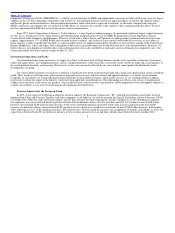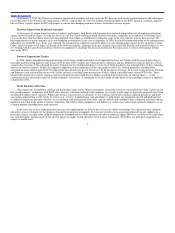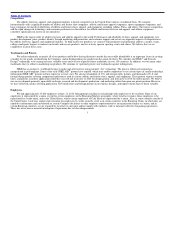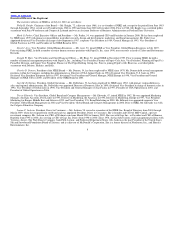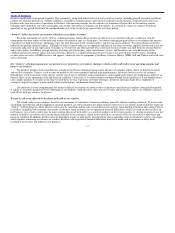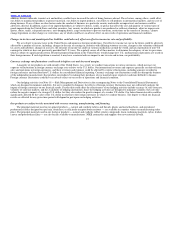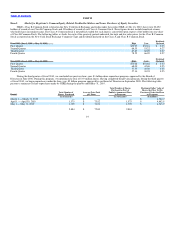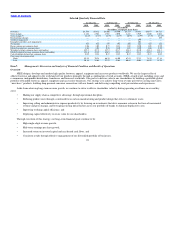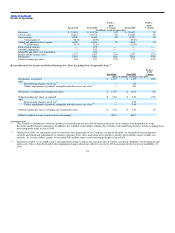Nike 2010 Annual Report Download - page 17
Download and view the complete annual report
Please find page 17 of the 2010 Nike annual report below. You can navigate through the pages in the report by either clicking on the pages listed below, or by using the keyword search tool below to find specific information within the annual report.
Table of Contents
Consolidation of retailers or concentration of retail market share among a few retailers may increase and concentrate our credit risk, and impair our
ability to sell our products.
The athletic footwear, apparel, and equipment retail markets in some countries are dominated by a few large athletic footwear, apparel, and equipment
retailers with many stores. These retailers have in the past increased their market share and may continue to do so in the future by expanding through
acquisitions and construction of additional stores. These situations concentrate our credit risk with a relatively small number of retailers, and, if any of these
retailers were to experience a shortage of liquidity, it would increase the risk that their outstanding payables to us may not be paid. In addition, increasing
market share concentration among one or a few retailers in a particular country or region increases the risk that if any one of them substantially reduces their
purchases of our products, we may be unable to find a sufficient number of other retail outlets for our products to sustain the same level of sales and
revenues.
Failure to adequately protect our intellectual property rights could adversely affect our business.
We utilize trademarks on nearly all of our products and believe that having distinctive marks that are readily identifiable is an important factor in
creating a market for our goods, in identifying us, and in distinguishing our goods from the goods of others. We consider our NIKE ® and Swoosh Design®
trademarks to be among our most valuable assets and we have registered these trademarks in over 150 countries. In addition, we own many other
trademarks that we utilize in marketing our products. We believe that our trademarks, patents, and other intellectual property rights are important to our
brand, our success, and our competitive position. We periodically discover products that are counterfeit reproductions of our products or that otherwise
infringe on our intellectual property rights. If we are unsuccessful in challenging a party’s products on the basis of trademark or design or utility patent
infringement, continued sales of these products could adversely affect our sales and our brand and result in the shift of consumer preference away from our
products. The actions we take to establish and protect trademarks, patents, and other intellectual property rights may not be adequate to prevent imitation of
our products by others or to prevent others from seeking to block sales of our products as violations of proprietary rights.
In addition, the laws of certain foreign countries may not protect intellectual property rights to the same extent as the laws of the United States. We
may face significant expenses and liability in connection with the protection of our intellectual property rights outside the United States, and if we are
unable to successfully protect our rights or resolve intellectual property conflicts with others, our business or financial condition may be adversely affected.
We are subject to periodic litigation and other regulatory proceedings, which could result in unexpected expense of time and resources.
From time to time we are called upon to defend ourselves against lawsuits and regulatory actions relating to our business. Due to the inherent
uncertainties of litigation and regulatory proceedings, we cannot accurately predict the ultimate outcome of any such proceedings. An unfavorable outcome
could have an adverse impact on our business, financial condition and results of operations. In addition, any significant litigation in the future, regardless of
its merits, could divert management’s attention from our operations and result in substantial legal fees.
Our international operations involve inherent risks which could result in harm to our business.
Virtually all of our athletic footwear and apparel is manufactured outside of the United States, and the majority of our products are sold outside of the
United States. Accordingly, we are subject to the risks generally associated with global trade and doing business abroad, which include foreign laws and
regulations, varying consumer preferences across geographic regions, political unrest, disruptions or delays in cross−border shipments, and changes in
economic conditions in countries in which we manufacture or sell products. In
14



